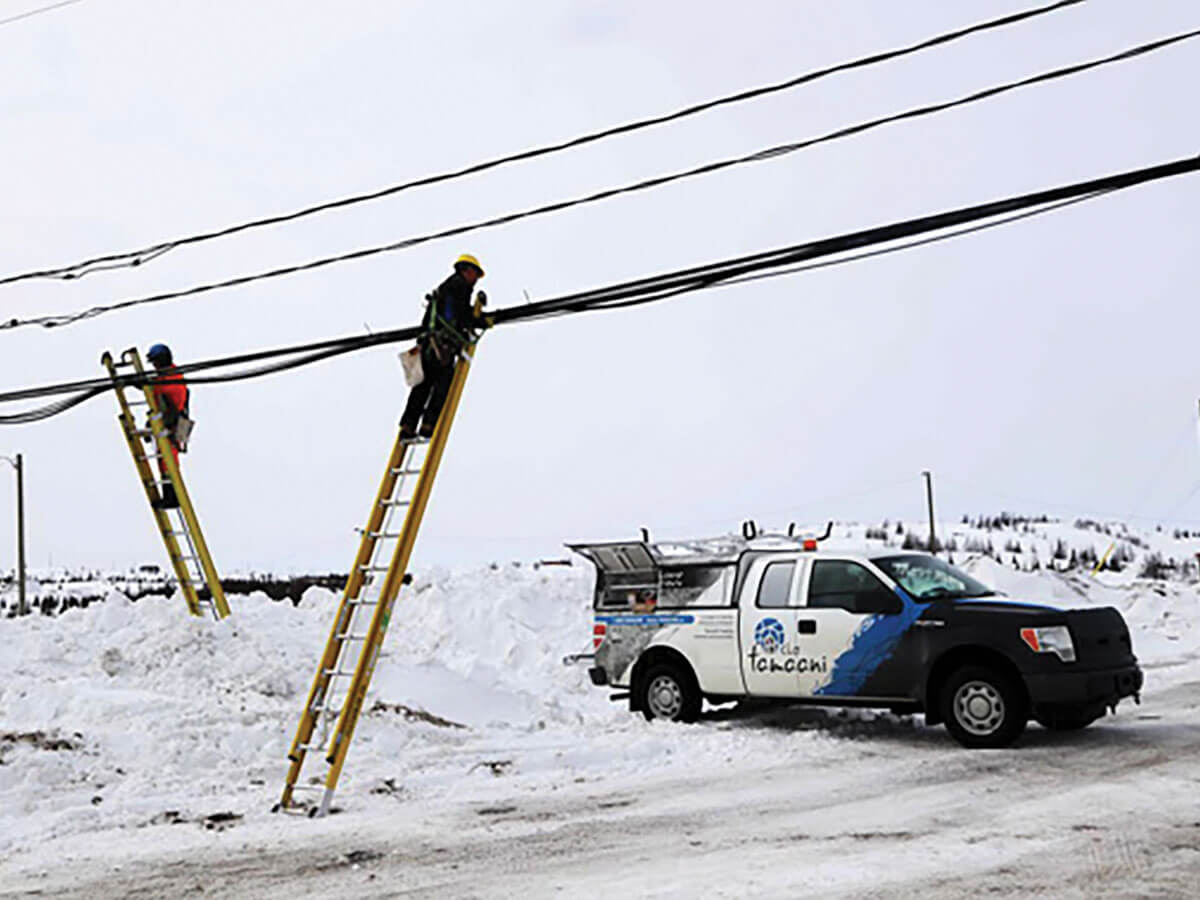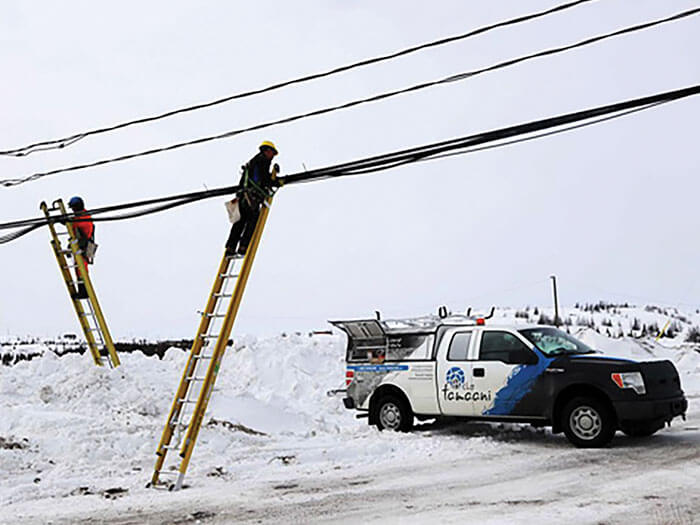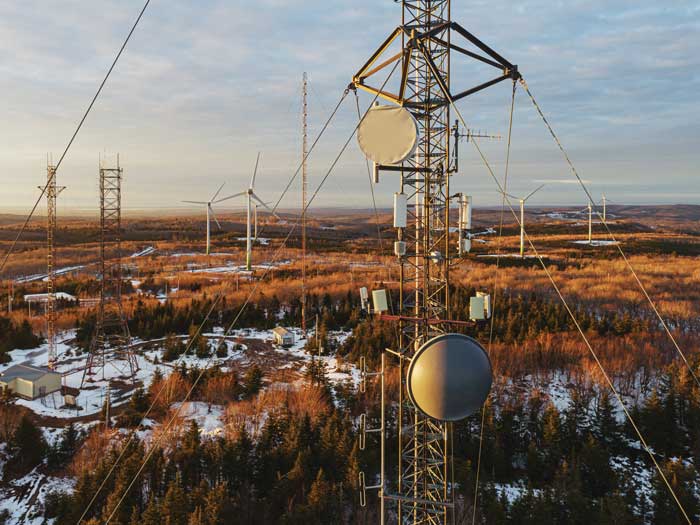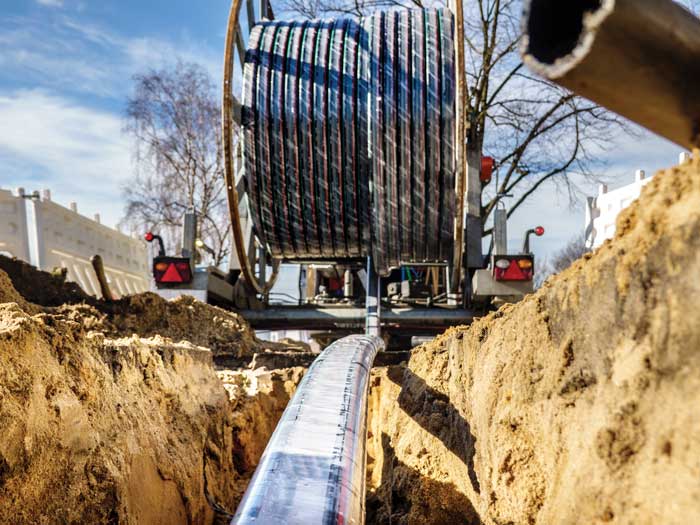
Rural internet could hold the key to Canada’s economic future
 Only 45.6 per cent of Canadians in rural regions have access to internet, that drops to 34.8 per cent of households in First Nations reserves (Photo courtesy of Tamaani)
Only 45.6 per cent of Canadians in rural regions have access to internet, that drops to 34.8 per cent of households in First Nations reserves (Photo courtesy of Tamaani)
“Can you hear me?” Brenna Minish-Kichuk asks, staring patiently at the frozen, heavily-pixelated image on her computer screen.
Minish-Kichuk, a CPA, is on a year-end-review virtual call with a client from a First Nations reserve about 115 kilometers from her office in Swan River, Manitoba. They’re attempting to go over paperwork across a satellite internet connection that has been reliably unreliable. Minish-Kichuk is one of three partners working out of MNP’s offices in Swan River, which is five hours northwest of Winnipeg near the Saskatchewan border. A town of 3,800 that services a rural community of 10,000, agriculture is its primary industry, with many farms and First Nations reserves dotting the sprawling landscape.
Being a small-town accountant can be a rewarding experience and Minish-Kichuk’s diverse client base means she’s able to serve a broad set of accounting needs. “Kind of like a family doctor,” she says. “Being a rural office we try very hard to create a culture where clients could just pop in and ask questions and chat. So you’d have multiple face-to-face meetings throughout the year. That was the norm.”
The pandemic, of course, changed all of that. Minish-Kichuk is in the now-familiar situation of navigating a virtual world. And so she waits. Waits for her client to see the paperwork she had posted. Waits during the long delay between question and answer, wondering if the connection has been lost. “We got through it but, just, yeah…” she sighs. “It wasn’t ideal.”
Like the majority of Canada’s rural and remote areas, reliable high-speed internet has always been a problem in Swan River. Two years ago, local provider WestMan installed some fibre optic cables that run through the town, linking to a fixed network and a faster, more dependable connection, but that hasn’t helped people in the surrounding region who remain without access.
In December 2016, six months after the UN General Assembly declared internet access a basic human right; the Canadian Radio-television and Telecommunications Commission (CRTC) declared broadband internet a basic service in Canada. Recognizing its importance, the federal government promised to connect 98 per cent of Canadians to high-speed internet by 2026 and 100 per cent by 2030—“high speed” defined as minimum upload speeds of 50 Mbps and download speeds of 10 Mbps (megabits per second).
According to the CRTC, today, 87.4 per cent of Canadians have access to high-speed internet. For those living in urban communities the number is 98.6 per cent. Compare that to just 45.6 per cent in rural regions—and 34.8 per cent of households in First Nations reserves.
The rural-urban divide has always existed. But now it’s become a digital divide, separating those Canadians with reliable internet access and the millions still without.
“Broadband is a uniquely regional issue. What works in Alberta will not work in Nova Scotia.’’
“The take-home lesson is that the status quo is not working,” says Helen Hambly, professor and project leader for the University of Guelph’s Regional and Rural Broadband Project, which monitors and analyzes everything from major infrastructure work carried out by Canada’s telecom giants to publicly funded projects from Canada’s many locally focused “mom and pop shop” internet service providers (ISPs).
Today’s broadband networks have become fundamental to an evolving global economy. Innovations like cloud technology are changing the way entire sectors work, while “Industry 4.0” is built on the back of fifth-generation (5G) network connectivity. Canadians have come to depend on high-speed broadband for essential services and as a means of communication. Its absence creates socioeconomic disparities and leaves entire industries buffering.
It’s why narrowing the digital divide has recently become the focus of billions of dollars in public spending through several provincial and federal programs. As Hambly puts is: “Broadband and telecommunications is not a sector of the economy anymore. They are the economy.”
THE NORTHERN SHIELD
“Connectivity is more important than ever,” says CPA John Simcoe, entertainment, media and communications (EMC) audit and assurance leader at PwC. “The pandemic has forced Canadians—and really anybody in the world—to function with greater digital capacities.” A PwC study found that, during the first lockdown in March 2020, internet usage rose 48 per cent across the country compared to the same period the previous year.
And it’s not just YouTube and Facebook drawing Canadians online. In a 2021 poll conducted by the Canadian Internet Registration Authority, respondents were asked what type of organization they communicate with most online and 68 per cent said banks—the most popular choice, followed by government. Meanwhile, 28 per cent of Canadians consulted a doctor virtually in 2021 compared to 17 per cent the previous year.
The more we rely on an internet connection to function, the greater the need for reliable and affordable connectivity across most of the country. That, of course, is easier said than done.
“Broadband is a uniquely regional issue,” notes Hambly. “What works in southern Ontario does not work in northern Ontario; what works in Alberta will not work in Nova Scotia.”
The Canadian telecom landscape is dominated by the “Big Three” (Rogers, Telus, Bell), yet other smaller providers have found a gap in the underserved rural and remote markets, like the First Nations owned and operated Kuh-Ke-Nah Network (aka K-Net) in Sioux Lookout, Ontario which began operation in 1994 as a Bulletin Board System connecting high school students from nearby villages via text. Today, K-Net delivers internet to over 100 Ontario First Nations. “Community owned and operated telecoms are great because the money they earn gets reinvested in the network, plus they train locals to maintain the equipment,” Hambly says. “It’s a totally different model, but one that really works.”
K-Net is one of more than 250 ISPs across Canada serving 400,000 customers in rural communities. “Many smaller companies have been very competitive and offer a very decent quality of service and sometimes even lay fibre cable lines,” says Hambly, “but it tends to be very localized.”
Installing these lines is a major—and costly—undertaking. “One of the foundational issues, frankly, is that the cost of building our networks is more expensive than other territories,” says Simcoe. Canada’s varied geography is a major obstacle, with stubborn Precambrian rock to be dug up or towers erected to carry lines across rough terrain that endures four distinct seasons—including a harsh winter.
During the pandemic, when a lot of schooling and health care went virtual, communities saw outages for weeks at a time
Because of the logistical roadblocks of installing fixed-wireless lines, satellite internet access is the most common type of network in rural and remote regions of Canada. But, the more users linked to satellite in a particular area, the more signal strength weakens, making it a poor choice in cities where, to date, most major infrastructure upgrades have been concentrated. 5G networks, by comparison, can handle one million devices in a one-kilometre radius with virtually no lag. But, in remote places where construction is difficult, satellite is one of few options. Last August, the federal government invested $1.44 billion in Canadian company Telesat to develop its high-speed satellite technology, while other early-gen satellite companies like Xplornet marketed themselves as solutions for those living in rural areas.
In 2021, Starlink, a satellite broadband company owned by Elon Musk, appeared on the scene in Canada. Starlink is key to Musk’s goal to connect the entire planet to high-speed, low-latency internet and is making inroads.
“There’s been a lot of buzz about Starlink,” says Brenna Minish-Kichuk, adding that several locals signed up months before it became available. However, Starlink’s services come with an additional start-up cost of more than $700 on top of the roughly $75 to $120 per month Swan River locals already shell out for internet, making it unaffordable for many non-business users.
The University of Guelph’s Hambly says early results have been mixed and it will be another two years until there is enough data to show if Starlink can offer the reliable connection it promises. Until then, she says, “We will have to wait and see.”
PUBLIC FUNDING
“High-speed-internet connectivity becomes even more critical as Canada’s economy evolves and embraces technologies of tomorrow,” PwC’s Simcoe says. “It is certainly not something that’s lost on the government.”
In November 2020, prompted by the pandemic, the federal government increased funding to the ISED’s Universal Broadband Fund by about 75 per cent to a total of $2.75 billion. Factor in the CRTC’s separate but similarly named Broadband Fund (investing $750 million over the next five years) and various provincial funds, and there’s been an influx of investment made to further help close the digital gap.
“[Public subsidies] are what’s changing the rural environment,” Hambly says, where the ISPS that serve local communities are receiving funding needed to carry out large-scale infrastructure upgrades.
For example, in Nunavik, the massive region in northern Quebec, the local Kativik Regional Government and the region’s primary internet provider, Tamaani, wanted to install fibre optic cable for years to serve its largely Inuit population.
“Closing the digital divide to enable all Canadians to participate fully in the digital economy is of paramount importance.”
Last March, Tamaani was awarded $53 million through the CRTC’s Broadband Fund to expand construction of an underwater fibre-optic cable project connecting several communities from Chisasibi on James Bay, 530 kilometres north to Puvirnituq. Beyond providing a faster and more dependable service, the underwater cables will also lessen the burden across the rest of Nunavik’s satellite network, which had reached capacity in 2020 at the height of the pandemic.
“All the communities’ bandwidth is currently satellite-fed and the constraints of this became really apparent during the pandemic, when a lot of schooling and healthcare went virtual,” says Sarah Rogers, a business reporter who has covered the telecom industry for the local Nunatsiaq News. “Some communities saw internet outages for weeks at a time.”
“We are reminded daily of the unfortunate reality and challenges faced by Canadians in underserved communities,” says CRTC CEO and chairperson Ian Scott “Closing the digital divide to enable all Canadians to participate fully in the digital economy is of paramount importance.”
INDUSTRY 4.0
There’s an industrial revolution underway and it requires a high-speed connection to take part.
The emergence of “Industry 4.0”—the fourth industrial revolution, which relies on network connectivity across multiple sectors—has created a new sense of urgency surrounding Canada’s digital divide. While the country’s public and private sectors work to bring the nation up to its high-speed minimum standards, the industrial world is blazing ahead digitally.
“[Industry 4.0] is about becoming part of a larger connected ecosystem that will drive productivity, efficiency and flexibility across the economy,” says Simcoe. “Rural connectivity will be an important factor in its adoption and for key sectors, like agriculture, energy and mining, oil and gas—primarily located in rural areas—to advance.” Mining companies, for example, will require integrated networks of reliable data and broadband to utilize tools that monitor and service equipment. Modern solar grids, wind turbine farms and other renewable energy resources depend on cloud-based tools to function, while the emergence of Agtech is helping Canada’s farmlands increase productivity.
Because of its advanced speeds, the rollout of faster, more robust 5G networks is a key factor in all of this. Telus, which two years ago launched a new business unit, Telus Agriculture, announced last May a new plan to invest $54 billion to expand its 5G networks, extending 5G to 529 new urban and rural communities by the end of 2021. The company estimates that deployment will create 40,000 jobs and bring $150 billion to the Canadian economy over the next 20 years.
Last year, the federal government announced several 5G investments, including a $400-million joint project with the Ontario and Quebec governments. Simcoe says that developing infrastructure is vital to allow these powerful networks to reach Canada’s remote and rural communities.
The digital divide is hardly new, but factors like Industry 4.0, along with a small but notable population shift from cities to more affordable surrounding areas is pushing the issue to the top of the national agenda.
In the meantime, Minish-Kichuk and the folks around Swan River aren’t exactly holding their breath waiting for their situation to change. “I am not surprised it has taken this long,” she says, adding that many of her clients had become resigned to their inconsistent, buffer-heavy connections. “Unfortunately we have accepted that as reality.”
Yet the digital divide will only become more apparent as our economy moves forward and will require all hands on deck. “It’s really imperative that in approaching these issues of gaps in connectivity that all stakeholders are taken into consideration. Canada’s networks were a key enabler of the resilience in the economy through COVID-19,” Simcoe says. “That momentum needs to continue.”
MAKING CONNECTIONS
Read why improving high-speed internet access is good for the accounting profession, how tech savvy CPAs really need to be; plus, learn how to overcome the barriers to digital transformation.

